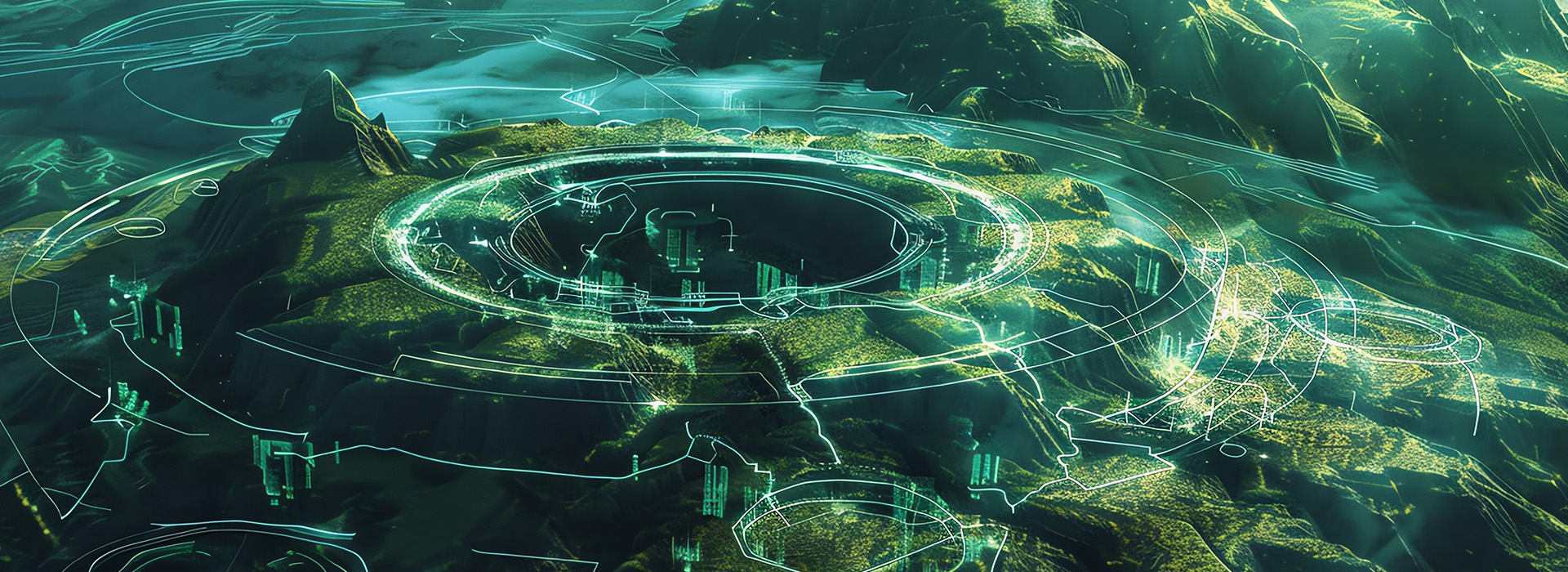The End of Maps: Why 4D Digital Twins Are Taking Over

For centuries, maps have been humanity’s way of making sense of the world.
From ancient parchment charts to today’s interactive 3D models, they’ve guided explorers, engineers, and city planners alike. But here’s the truth: maps as we know them are reaching their limits.
In a world of complex infrastructure, vast datasets, and rapid environmental change, a flat map, or even a 3D surface model, simply isn’t enough. Enter the 4D Digital Twin: the living, breathing evolution of spatial intelligence.
Why Maps Fall Short
Traditional maps and surface-based 3D models only capture appearances. They show roads, terrain, and buildings, but they treat the world like a hollow shell.
That works if you just need directions. But what if you need to know:
- How a subway tunnel interacts with underground geology?
- Where groundwater will move during heavy rainfall?
- How a mine pit evolves week by week?
Maps can’t answer those questions. They’re static snapshots in a world that refuses to stay still.
Enter the 4D Digital Twin
A 4D Digital Twin is more than a visualization—it’s a complete volumetric replica of reality that evolves over time. Built on voxel technology, every cubic meter is measurable, computable, and enriched with data.
Think of it as moving from a photo of a city… to an interactive simulation of the entire city, above and below ground, with history and forecasts built in.
Key advantages include:
- Depth: Model subsurface geology, utilities, and structures—not just the surface.
- Time: Add the fourth dimension to track changes across days, months, or years.
- Fusion: Integrate LiDAR, IoT sensors, seismic scans, and drone data into one unified model.
- Actionability: Run simulations, forecasts, and computations directly inside the twin.
Real-World Impact
Industries are already proving the shift:
- Mining: Simulating ore body evolution and optimizing blasting to reduce waste.
- Urban Planning: Preventing million-dollar delays by revealing subsurface utility conflicts before construction.
- Energy: Monitoring pipelines, power plants, and offshore rigs over time to predict risks before they happen.
- Environmental: Forecasting floods, erosion, and climate impacts with unparalleled accuracy.
The common thread? Decisions are no longer based on guesswork. With 4D Digital Twins, leaders can see what’s beneath, track what’s changing, and simulate what’s next.
The Future Is Beyond Maps
We’re not saying maps will disappear. They’ll remain useful for navigation and reference. But for industries where precision, foresight, and safety matter, they’re no longer enough.
The world isn’t flat. It isn’t static. And it isn’t just about surfaces.
That’s why the future belongs to 4D Digital Twins—dynamic, data-rich models that let us measure, simulate, and act with confidence.
Voxel Space is at the forefront of this transformation, turning massive datasets into living voxel-based 4D twins. Whether you’re managing a mine, designing a city, or monitoring infrastructure, it’s time to move beyond maps.
FAQ: 4D Digital Twins and the End of Maps
A 4D Digital Twin is a volumetric, time-aware digital model that represents both the surface and subsurface of the real world. It evolves over time to simulate change, movement, and future scenarios.
Maps are flat, and 3D models show only surfaces. A 4D Digital Twin captures depth, density, and time, enabling users to analyze how environments or structures evolve dynamically.
Voxel Space uses voxel-based modeling and cloud computation to transform LiDAR, IoT, and geospatial data into interactive 4D twins. This enables users to measure, simulate, and forecast real-world changes in real-time.
Mining, energy, infrastructure, urban planning, and environmental monitoring all leverage 4D Digital Twins to predict risks, optimize design, and improve sustainability.
Yes. While maps will remain for navigation, industries that rely on precision and foresight are adopting 4D Digital Twins for decision-making, simulation, and predictive modeling.
Explore The Platform Today
-
Why Volumetric Spatial Solutions Are the Future And How Voxel Space Leads the Way
In the era of massive data, traditional 2D maps and surface models are no longer enough.Today’s world runs...
September 10, 2025By VoxelSpace -
Critical Minerals. Critical Intelligence.
How 4D Volumetric Modeling Is Powering the Next Mining RevolutionAs the world races toward electrification and renewable energy,...
October 22, 2025By Voxel Space -
Volumetric Spatial Intelligence Explained
Why Traditional Maps and Models Fall ShortTraditional maps and 3D models are surficial. They capture the outside of...
September 10, 2025By Voxel Space



